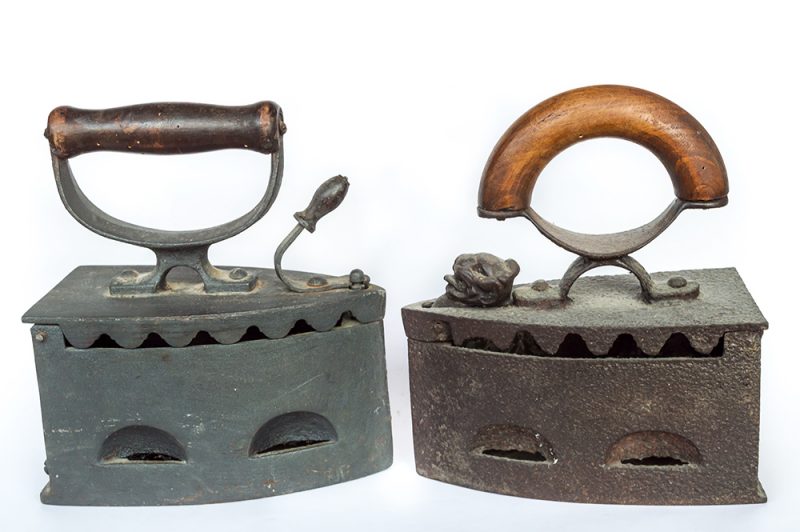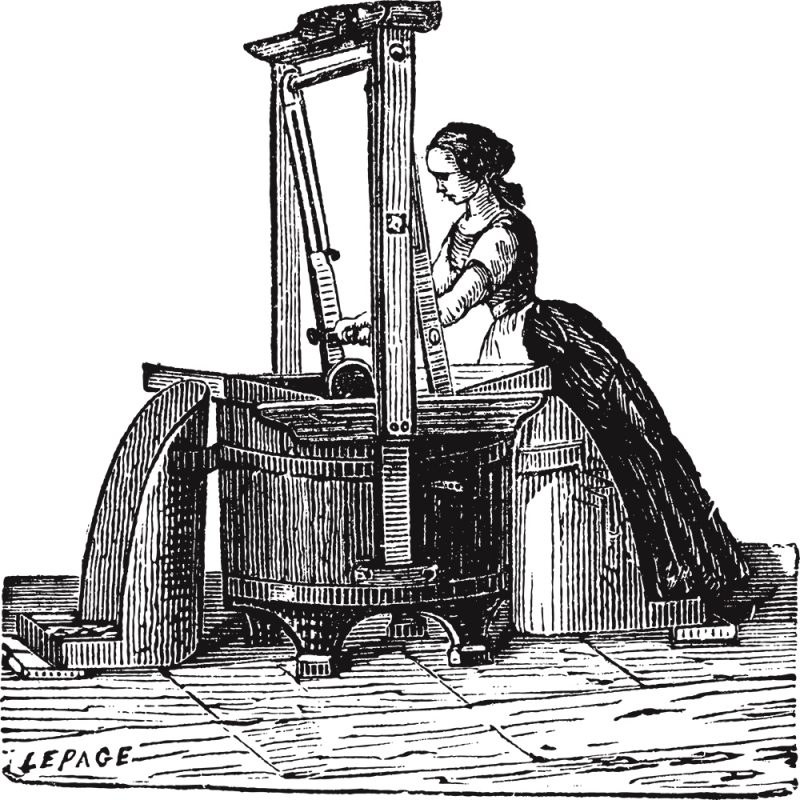That sounds like a very ordinary thing to be talking about, doesn’t it ? Yet its actually very interesting. So, let me set the scene, and get you thinking. In the Regency period, there were :
- no washing machines
- no hot running water
- no cold running water, for that matter
- no modern style soaps
- no modern style hyper effective washing powders or detergents
- no spot removing solutions
- no dry cleaning
- no clothes dryers
- no electric irons
- no folding ironing boards
That starts to make it harder, doesn’t it? Imagine how difficult it would be, to get even something as basic as mud off the hem of a skirt, with none of those things to help!
So – what did they have? They had the following:
- Big tubs and coppers, that were filled with water and heated by having a fire under them
- Two sorts of soap – The first was a coarse soap used for washing out difficult stains and generally by the lower classes. This was made of melted rendered animal fat, lye(which is caustic), ashes, and sand, all mixed up and set into blocks. The second was a more refined soap, very expensive, made for mainly the ladies and gentlemen of the nobility to use. This still started with things like animal fats and ashes, but also included such things as herbs and flowers, and scent essences made from herbs and flowers. All of the ingredients were mixed into a paste which was ‘milled’ and made as small and finely ground as possible, so that the resulting bars of soap were smooth and fine to the touch, and smelled nice.
- Herbal cleaning mixtures – today, you can buy things like citrus based cleaners, made from the skins of oranges, lemons, limes and grapefruit – those sorts of cleaners, in their original forms, were invented centuries ago.
- The nobility, at least, had servants to do their washing for them – by hand, bent over a tub or bucket, scrubbing away at the cloth.
- Irons – which were, literally, big shaped chunks of iron, with handles, that were set on a rack over the fire to heat, and then used to press the clothes.


So many clothes did not last long, in good condition, because stains could not be removed, and clothes were often not washed at all, or rarely washed, because the coarse washing methods would damage the cloth or embroidery etc. Clothes never washed have a habit of starting to smell of the bodies they have been worn by……
For the nobility, this was not a problem – they got new clothes. For the lower classes, the fact that the nobility could afford new clothes was a blessing – ladies often gave their old clothes to their maids or to the families of other staff in their households. And the servants were happy to wear stained and smelly clothes if they were pretty, and in better condition than what they had before.
Second hand clothes were also sold – and the poorer end of the middle class would often buy second hand clothes. These had been cleaned as well as possible, before being sold, but were still likely worn and had stains here and there.
Another way that clothes were made to last longer, was by unsewing them and ‘turning the fabric’ – literally, turning the fabric inside out, and sewing them together again. So the inside, which was not faded from the sun, or stained by food or other spills, was now on the outside, and the dress looked better for a while, and lasted a bit longer.
So, next time you go to grumble about needing to do the washing, stop and think – imagine having to do it in Regency times….. be grateful for that washing machine!

Leave a Reply